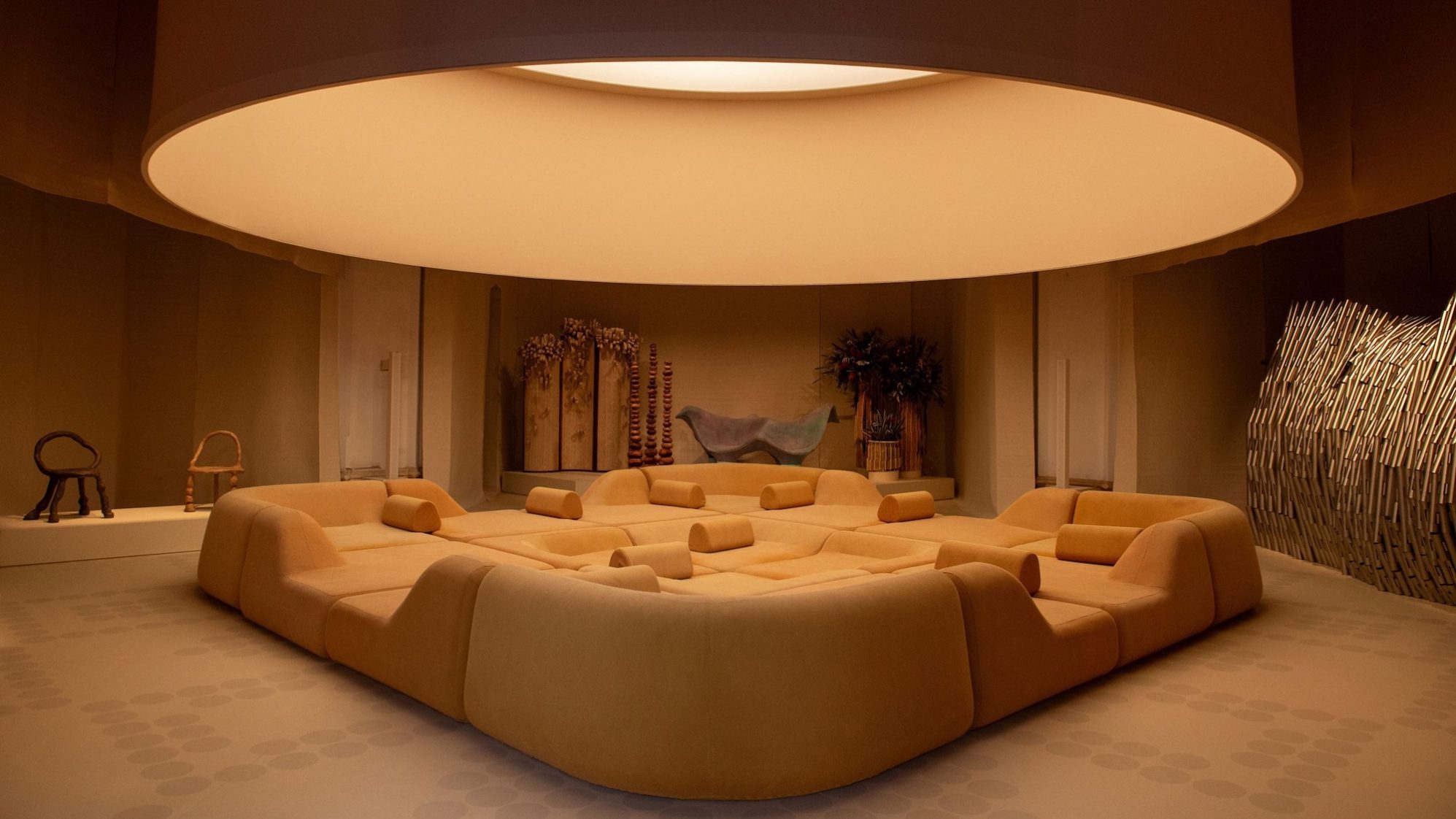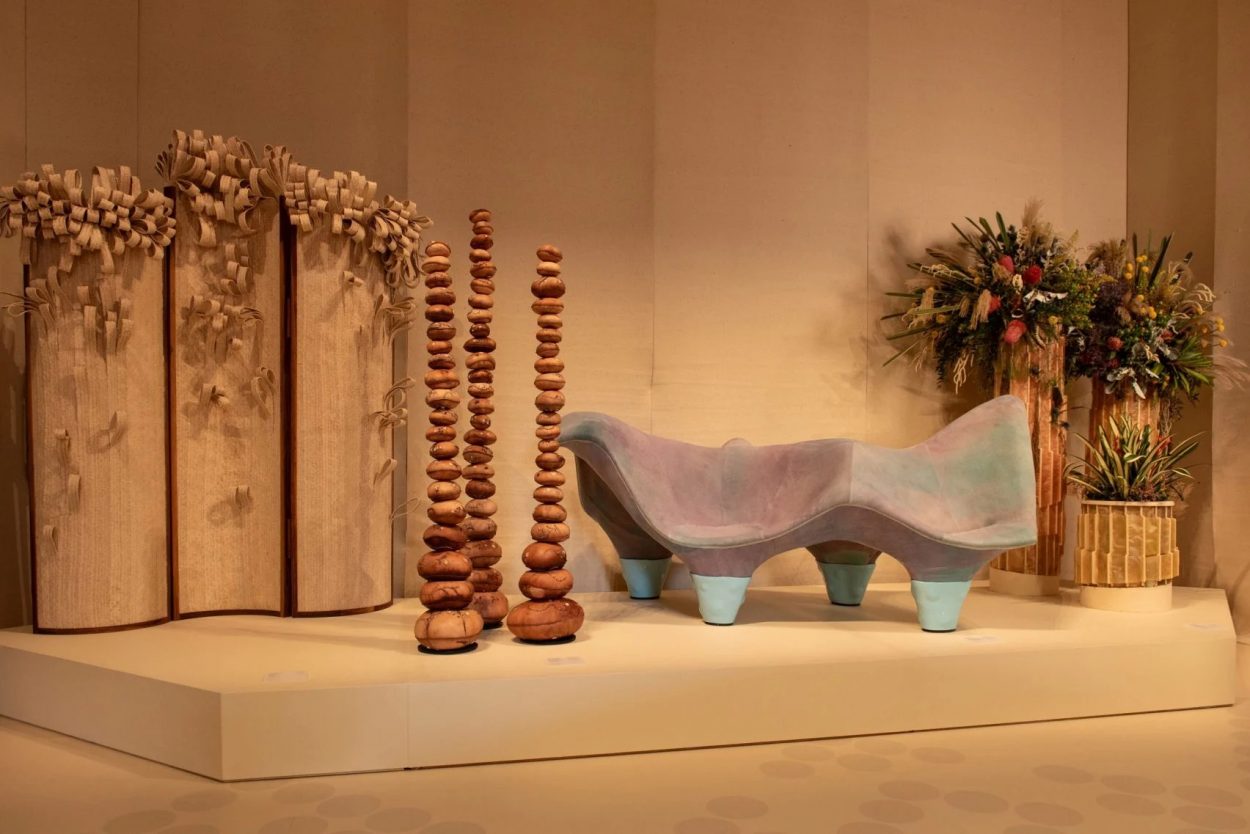Saudi Arabia’s ambitious Vision 2030 plan likely evokes fantastical renderings of architectural giga-projects in the barren Middle Eastern desert, not to mention the multitude of thinkpieces spurning them as a dystopian nightmare and questioning their feasibility and as the oil-rich country’s cash reserves dry up. Wild architecture is only part of the plan to diversify the economy, which involves building new industries. The country has created an airline, plans to invest $40 billion into AI research, and launched a golf league in partnership with the PGA Tour. Less talked about are Vision 2030’s design initiatives, namely Madrasat Addeera Editions and the inaugural AlUla Design Residency, which were on display during Milan Design Week.
Set within the landmark Mediateca Santa Teresa library in Milan’s Brera district, Design Space AlUla presented a smattering of projects created with local craft traditions. Among these were the AlUla Design Residency, realized under the curation of architect Ali Ismail Karimi, which tapped five global designers to participate in a five-month immersion into life in AlUla. Most visible was Hall Haus’s giant seating system, which blended Majlis-style sofas with the swoops of sand dunes. Also appearing windswept are Bahraini-Danish’s steel partitions and sculptural chairs by Leo Orta that channel AlUla’s geological formations. Studio Raw Material’s floor lamps explore the spatial quality of light in the Qasr al-Bint while Leen Ajlan’s wooden platforms and benches reflect the setup of Saudi folk games.


